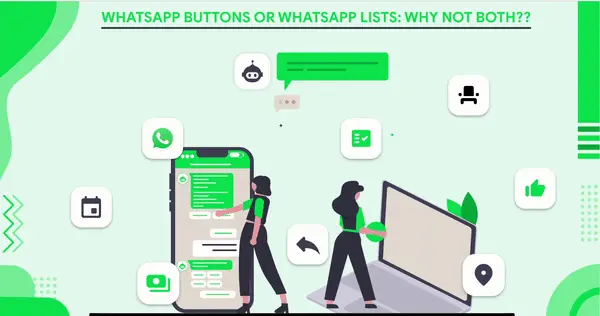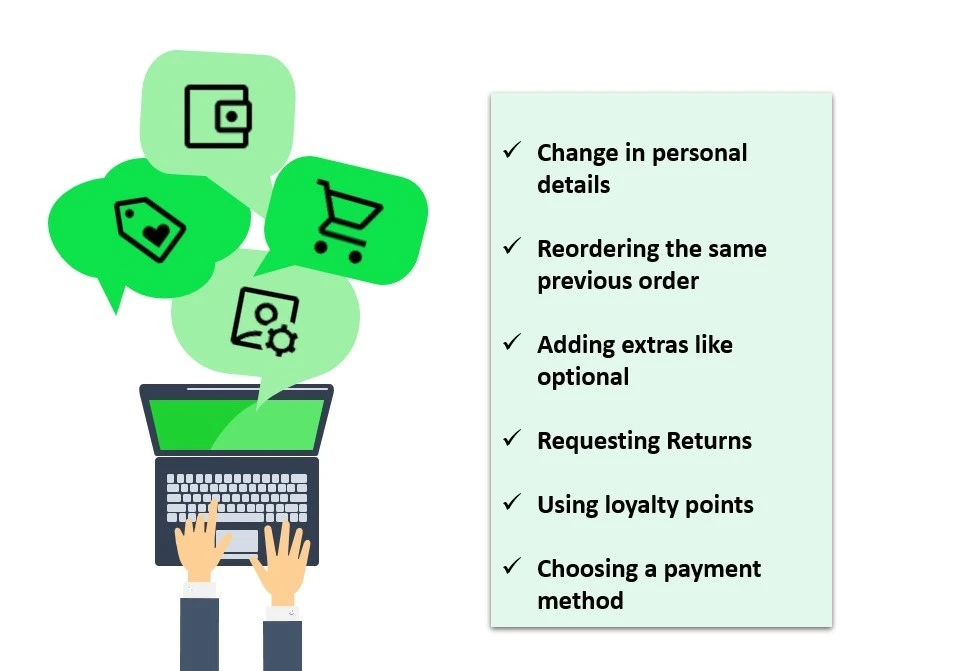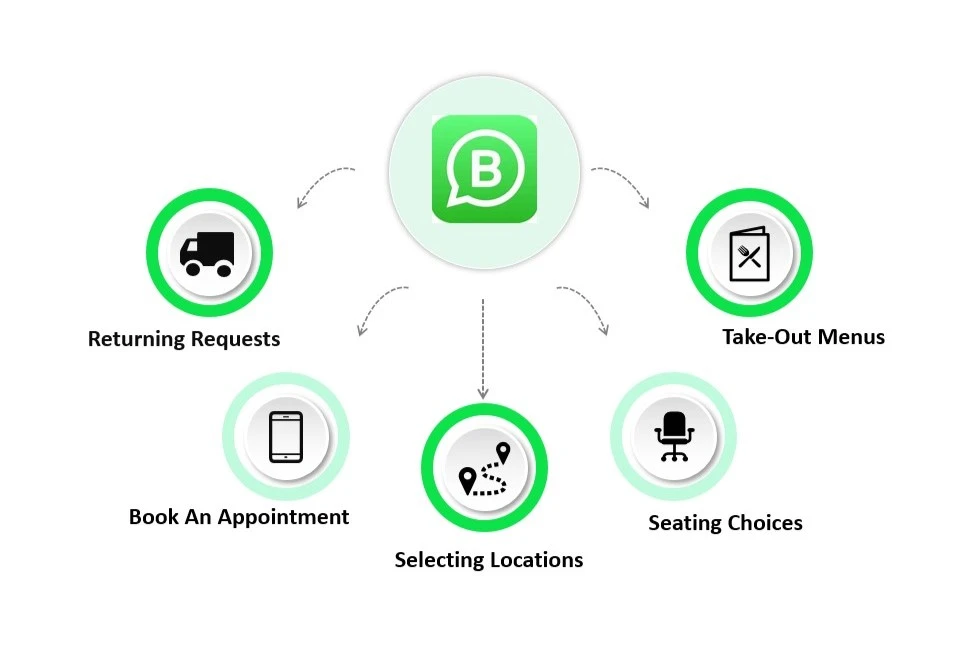WhatsApp Reply Buttons or WhatsApp Lists: Why Not Both??

- October 8, 2021
- Priyanka Shah
- WhatsApp Post
The digital age has always focused on better and interactive conversations between a user and a brand. From Billboards to Display ads, from TV ads to YouTube ads, from printed ads to ads on your phone, from calling someone to messaging, we all can see the shift towards digital and interactive conversations. The same technique is been used by WhatsApp Business and it focuses on making the conversation more engaging and convenient between users and brands. Continuing that, two new additions in WhatsApp Business include new WhatsApp Buttons. These WhatsApp Buttons include two buttons: REPLY BUTTONS and LIST MESSAGES.
What are WhatsApp Business Reply buttons?
Reply buttons and list messages account for the most recent WhatsApp Business Features to be added in June 2021. It’s only 3 months but this feature can be called one of customers’ favourite. And the bias is quite justifiable. Quick Reply buttons can be explained as structured messages with a maximum of three options and each option is a button that can be selected by the user according to their choice. People just have to tap on their preferred option and it’s selected. Businesses can use this feature when it comes to getting quick responses like Yes or No or reselecting from previously placed orders, etc.
The best part about WhatsApp buttons like Reply Buttons is that the users don’t have to manually type their choices but can select them with just one tap! But not to forget that Reply Buttons can be used when the selection is among 3 options only and not more.
What are WhatsApp List Messages?
WhatsApp List Messages are a form of interactive message that is available to any user that has a WhatsApp Business Account. The messages are delivered by using the WhatsApp Business API. This API allows users to send out messages with multiple clickable options, and when the user taps on them they are directed to different information or use cases. Use WhatsApp Business List Messages, businesses can give your customers without having to wait for them to respond as they can select from various options that have been provided in the list message they received – this also makes it easier for customers to use WhatsApp without having to type out their requests.
Use Cases of Interactive Buttons:
Interactive buttons are a great way to make user interfaces more engaging and user friendly. They can be used in many ways, let’s look after some use cases for the same.
WhatsApp Business List Messages
1. Returning Requests:
One of the most common use cases of list messages is returning requests. This can be done through various WhatsApp message templates and interactive message templates. A Bot can be used to create a WhatsApp chat, with buttons that are predefined for the user to add buttons and create a WhatsApp business. By using such interactive templates, it is possible to let’s take a customer’s order as an example; an automated process can be set up to return requests in an efficient manner without having to manually answer them one by one. This provides customers with a much more pleasant customer support experience and ensures that all requests are handled quickly.
2. Book an Appointment:
If you are using WhatsApp Business for your business, you can leverage the interactive templates to let your customers take the next step towards making an appointment. By creating list messages with these tools, you can make sure that customers get all of their questions answered in one go and don’t have to keep searching for more information. When you book an appointment with a doctor or a specialist, you will be able to use WhatsApp to send a list of potential dates and times that work for you. You can also use buttons to ask for recommendations from friends or family.
3. Selecting locations:
When selecting locations as a use case for WhatsApp list buttons, it is important to consider the user’s needs and preferences. For example, if the user is looking for a specific type of restaurant or shop, then a list of nearby locations should be provided in order for them to easily find what they are looking for. The list should also allow users to filter by location or type of business so that they can narrow down their search results. Additionally, providing a map view of all the available locations would be beneficial to the user so that they can quickly get an overview of where each option is located in relation to one another. Furthermore, allowing users to save their favourite locations could be useful so that they can quickly access them from the list at any time. Ultimately, when selecting locations as a use case for WhatsApp list buttons, it is essential to provide users with an intuitive and easy-to-use interface that meets their needs and makes it easier to find what they are looking for.
4. Seating choices:
WhatsApp List buttons can be used for a variety of use cases, including seating choices. With this feature, users can be provided with multiple options for seating during an event. The user can choose their preferred seat from a list of available options. This could include the type of chair or location in the room. Additionally, WhatsApp List buttons make it easier to organize events by allowing attendees to select their own seating arrangements. This could help streamline the process and reduce confusion at the event. By providing these choices ahead of time, organizers can also ensure that everyone has a seat that they are comfortable with. WhatsApp List buttons are a great tool to use when dealing with seating arrangements and give users the opportunity to customize their experience.
5. Take-out menus:
Take-out menus are an excellent example of how list messages can be used to great effect. By listing all the items on offer, customers can quickly and easily see what dishes are available and make their choices accordingly. Furthermore, by providing both the price and a brief description of each dish, customers can get an idea of what they’re ordering before they even call in their order. Take-out menus often include helpful images too, so customers can get a better idea of what the dish looks like and make an informed decision. Ultimately, take-out menus are an effective use case of list messages that not only present information in a digestible format but also help customers make decisions more quickly and accurately.
WhatsApp Business Reply Buttons

1. Change in personal details:
Change in personal details is a common use case for reply buttons. This can be especially useful for customer service applications, where customers need to provide up-to-date information about themselves to ensure their inquiries are answered properly. Reply buttons allow customers to quickly update their contact information, shipping address, and other data without having to go through a complicated form filling process. In addition, they can also be used to provide feedback or request additional help if needed. With the help of reply buttons, customers are able to personalise details quickly and easily while providing customer service representatives with the most current information available.
2. Reordering the same previous order:
Reordering the same previous order is a great use case of reply buttons. It can be used to quickly and easily remind customers of their past orders and make it possible for them to easily place new orders. This feature is particularly helpful for businesses that rely on repeat customers, such as subscription services or retail stores. With this feature, customers can go back to their previous order in just a few clicks and reorder the exact same items they had before. This saves them from having to search through multiple pages of products or remember what they ordered last time. Reply buttons can also be used to help customers customize their orders by adding additional items, changing quantities, or removing items altogether.
3. Adding extras like optional:
Adding extras like optional buttons can be a great use case for businesses. Buttons can help customers to quickly respond to customer service messages, and it’s easy to do with only 20 characters. Messages within the button text can be personalised and used to answer queries from customers. This way, businesses can provide better customer communication within 24 hours. Furthermore, they can use rich media as part of their messages as well. Rich media such as images, GIFs, videos and audio files are great to use in customer messages and conversations. Using these extras in reply buttons helps businesses make more meaningful connections with their customers and create better customer experiences overall.
4. Requesting returns:
Requesting returns is a common use case of reply buttons. Reply buttons allow customers to quickly and easily respond to customer service inquiries or requests for returns. Companies can use reply buttons to provide a quick response that acknowledges the customer’s request while also providing instructions on how to return the product. This allows customers to quickly understand their options and make the best decision for their needs. In addition, reply buttons can be used as an efficient way to track customer interactions and ensure that all requests are handled in a timely manner. Reply buttons are an invaluable tool for any business looking to improve their customer service experience and simplify the process of requesting returns.
5. Using loyalty points:
Loyalty points are a great use case for reply buttons, as they can be used to reward customers for their loyalty. Reply buttons make it easy for customers to sign up for loyalty programs and redeem rewards, eliminating the need for paper forms or long registration processes. Customers can also easily check their loyalty points balance and see what rewards they can redeem with their points.
6. Choosing a payment method:
When choosing a payment method, it is important to consider factors such as convenience, cost, and security. Reply buttons make this process easier by offering a range of options to choose from, allowing users to quickly and efficiently select the payment method that best suits their needs. The reply buttons also provide additional information about each of the payment methods, such as transaction fees and delivery times, which can help users make an informed decision.
To Sum Up:
There has never been a better time to integrate rich messaging into ongoing marketing and customer experience initiatives. Therefore, by integrating with the Kevit.io platform, you can improve your messaging strategies with rich messages that encourage individualized engagement between businesses and customers. Kevit.io is ready with these updates to sign you up for WhatsApp Automation Chatbot with WhatsApp Business and WhatsApp Business API. Leave us a mail at coffee@kevit.io and know more about automation and chatbots at Kevit.io.
See Kevit.io In Action
Automating business processes with Kevit.io is now just a click away!
